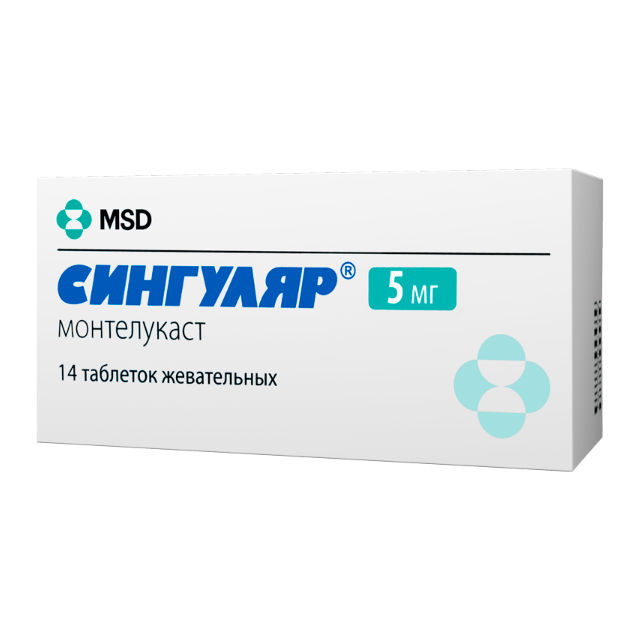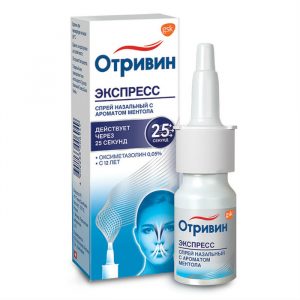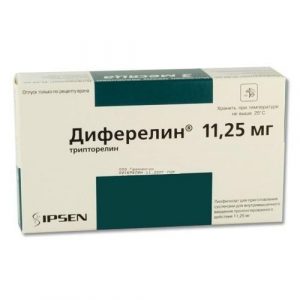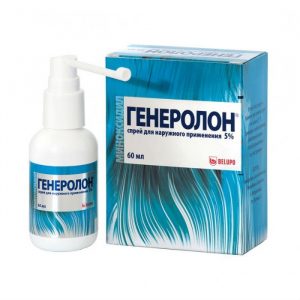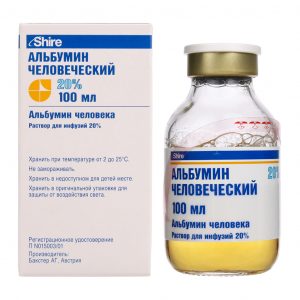Description
Release form
Chewable tablets.
Packing
14 pcs.
Pharmacological action of
Pharmacodynamics of
Montelukast inhibits cysteinyl of leukotriene receptors of the epithelium of the respiratory tract, while having the ability to inhibit bronchospasm due to inhalation of cysteinyl-leukotriene LTD4 in patients with bronchial asthma. A dose of 5 mg is sufficient to relieve bronchospasm induced by LTD4. The use of montelukast in doses exceeding 10 mg per day, taken once, the effectiveness of the drug does not increase.
Montelukast causes bronchodilation within 2 hours after ingestion and may supplement bronchodilation caused by 2 -adrenomimetics.
Pharmacokinetics
Absorption
Montelukast is rapidly and almost completely absorbed after oral administration. Eating regular food does not affect the bioavailability and maximum plasma concentration (Cmax) of coated tablets and chewable tablets. In adults, when taken on an empty stomach, 10 mg coated tablets of Cmax are reached after 3 hours. Oral bioavailability is 64%.
When taken on an empty stomach, chewable 5 mg Cmax tablets in adults are reached after 2 hours. Bioavailability is 73%.
Distribution of
Montelukast binds to plasma proteins by more than 99%. The volume of distribution of montelukast is an average of 8-11 liters.
Metabolism
Montelukast is extensively metabolized in the liver. When using therapeutic doses, the concentration of montelukast metabolites in plasma in equilibrium in adults and children is not determined.
It is assumed that isoenzymes of cytochrome P450 CYP (3A4 and 2C9) are involved in the metabolism of montelukast, while at therapeutic concentrations, montelukast does not inhibit isoenzymes of cytochrome P450 CYP: 3A4, 2C9, 1A2, 2A6, 2C19 and 2D6.
Excretion of
Montelukast clearance in healthy adults is an average of 45 ml / min. After oral administration of montelukast, 86% of its amount is excreted in feces for 5 days and less than 0.2% in urine, which confirms that montelukast and its metabolites are excreted almost exclusively with bile.
The half-life of montelukast in young healthy adults is from 2.7 to 5.5 hours. The pharmacokinetics of montelukast remains almost linear when ingested doses of more than 50 mg. When taking montelukast in the morning and evening hours, differences in pharmacokinetics are not observed. When taking 10 mg film-coated tablets once a day, moderate (about 14%) cumulation of the active substance in plasma is observed.
Pharmacokinetics in various patient groups
Gender
The pharmacokinetics of montelukast in women and men are similar.
Elderly patients
When taken orally, once a day, 10 mg film-coated tablets, the pharmacokinetic profile and bioavailability are similar in elderly and young patients.
Hepatic insufficiency
Patients with mild to moderate hepatic insufficiency and clinical manifestations of liver cirrhosis showed a slowdown in Montelukast metabolism, accompanied by an increase in the area under the concentration-time (AUC) pharmacokinetic curve by approximately 41% after a single dose of 10 mg .
The excretion of montelukast in these patients is slightly increased compared with healthy subjects (average half-life is 7.4 hours). Montelukast dose changes for patients with mild to moderate liver failure are not required. There is no data on the nature of the pharmacokinetics of montelukast in patients with severe hepatic insufficiency (more than 9 points on the Child-Pugh scale).
Race
There were no differences in the clinically significant pharmacokinetic effects in patients of different races.
Renal failure
Since montelukast and its metabolites are not excreted in the urine, the pharmacokinetics of montelukast in patients with renal insufficiency have not been evaluated. No dose adjustment for this group of patients is required.
Indications
Prevention and long-term treatment of bronchial asthma in adults and children, from 2 years of age, control of day and night symptoms of the disease.
Relief of symptoms of allergic rhinitis (seasonal and year-round) in children from 2 years of age.
Contraindications
Hypersensitivity to the components of the drug.
Precautions: Pregnancy, lactation period.
Use during pregnancy and lactation
The singular should be used during pregnancy and lactation only in cases where the expected benefits to the mother outweigh the potential risk to the fetus or baby.
Special instructions
The singular is not recommended for the treatment of acute attacks of bronchial asthma. In acute asthma, patients should be prescribed medications for relief and preventive therapy. Patients with bronchial asthma are always advised to carry emergency medications (short-acting inhaled beta-agonists). To stop an acute attack of bronchial asthma after exercise, use a drug to stop the attack, i.e., an inhaled short-acting beta-agonist. Treatment with a Singular does not guarantee absolute prevention of exacerbations. In the period of exacerbation of asthma and the need to use emergency drugs (short-acting inhaled beta-agonists) to stop attacks, you should not stop taking Singular. Patients with a confirmed allergy to acetylsalicylic acid and other non-steroidal anti-inflammatory drugs should avoid contact with these drugs during the treatment with Singular, since improving respiratory function in patients with allergic bronchial asthma, however, it does not prevent bronchoconstriction caused by their NSAIDs. The dose of inhaled glucocorticosteroids used simultaneously with the Singular is gradually reduced under the supervision of a doctor. A sharp replacement of inhaled or oral glucocorticosteroids with a Singular is unacceptable. In rare cases, a decrease in the dose of systemic glucocorticosteroids in patients receiving anti-asthma drugs at the same time, including leukotriene receptor blockers, was accompanied by the appearance of one or more of the following complications: eosinophilia, hemorrhagic rash, worsening pulmonary symptoms, cardiac complications and / or neuropathy, sometimes diagnosed as Charge-Strauss syndrome (systemic eosinophilic vasculitis). Although a causal relationship between these side effects and treatment with leukotriene receptor antagonists has not been established, caution should be exercised when lowering the dose of systemic glucocorticosteroids during treatment with Singular, as well as ensure appropriate monitoring of the patient. Patients with phenylketonuria should be informed that the Singular contains 1.2 mg of aspartame in one chewable tablet. No age-related differences in the profile of the effectiveness and safety of the Singular were revealed.
For patients with mild or moderate hepatic impairment, special dose selection is not required. There is no data on the nature of the pharmacokinetics of montelukast in patients with severe hepatic insufficiency (more than 9 points on the Child-Pugh scale).
For patients with renal failure, a special dose adjustment is not required.
Influence on the ability to drive vehicles and work with mechanisms: there are no facts indicating that taking Singular affects the ability to drive a car or moving mechanisms.
Composition
1 chewable tablet contains:
Active ingredient: Montelukast – 5 mg.
Excipients: Mannitol
Microcrystalline cellulose
Hyprolose
Iron dye oxide red
Croscarmellose sodium
Cherry flavoring
Aspartame
Magnesium stearate.
Dosage and administration
The drug is taken orally 1 time / day, regardless of food intake.
For bronchial asthma – 1 tablet at night.
For bronchial asthma and allergic rhinitis – 1 tablet at night.
In case of allergic rhinitis – 1 tablet per day in an individual regimen, depending on the time of the greatest exacerbation of symptoms.
The singular is prescribed for children aged 2 to 5 years: at a dose of 4 mg (1 tablet chewing) per day. The therapeutic effect of the Singular with a change in the course of bronchial asthma develops during the day.
For elderly patients, patients with renal insufficiency, patients with mild or moderate impaired liver function, as well as gender-specific special dose selection is not required.
Drug Interactions
The singular can be prescribed along with other drugs, which are usually used for the prevention and long-term treatment of bronchial asthma and / or the treatment of allergic rhinitis. The recommended therapeutic dose of montelukast did not have a clinically significant effect on the pharmacokinetics of the following drugs: theophylline, prednisone, prednisolone, oral contraceptives (ethinyl estradiol / norethinodrel 35/1), terfenadine, digoxin and warfarin. The AUC value of montelukast decreases while taking phenobarbital by about 40%, which does not require changes in the dosage regimen of Singular. In vitro studies have found that montelukast inhibits the cytochrome CYP2C8 isoenzyme system. However, when studying the in vivo inter-drug interaction of montelukast and rosiglitazone (metabolized with the participation of the CYP 2C8 isoenzyme of the cytochrome system), the inhibition of the CYP 2C8 isoenzyme by montelukast was not confirmed. Thus, in clinical practice, the effect of montelukast on the CYP 2C8-mediated metabolism of a number of drugs, including paclitaxel, rosiglitazone, repaglinide, etc., is not assumed.
Combined treatment with bronchodilators: The singular is a reasonable complement to bronchodilators if they are not provided, adequate control of bronchial asthma. Upon reaching a therapeutic effect (usually after the first dose) from treatment with Singular, a gradual reduction in the dose of bronchodilators can begin.
Combination treatment with inhaled glucocorticosteroids: treatment with Singular provides an additional therapeutic effect to patients using inhaled glucocorticosteroids. Once stabilization is achieved, you can begin to reduce the dose of corticosteroid – gradually and under the supervision of a doctor. In some cases, a complete cancellation of inhaled glucocorticosteroids is permissible, however, a sharp replacement of inhaled corticosteroids with a singular is not recommended.
Overdose
Symptoms: overdose symptoms of Singular in patients with chronic bronchial asthma when used at a dose exceeding 200 mg / day for 22 weeks and at a dose of 900 mg / day for 1 week were not detected. There are reports of acute overdose of montelukast in children (at a dose of at least 150 mg / day). Clinical and laboratory data in this case indicate the compliance of the safety profile of Singular in children with the safety profile in adults and elderly patients. The most common adverse events were thirst, drowsiness, mydriasis, hyperkinesis, and abdominal pain.
Treatment: Conducting symptomatic therapy.
There is no evidence of the possibility of eliminating montelukast by peritoneal dialysis or hemodialysis.
Storage conditions
Store in a dry, dark place at temperatures below 30 ° C.
Expiration
3 years.
active substance
Montelukast
Terms leave through pharmacies
In retseptu
Dosage form
tablets for resuscitation
